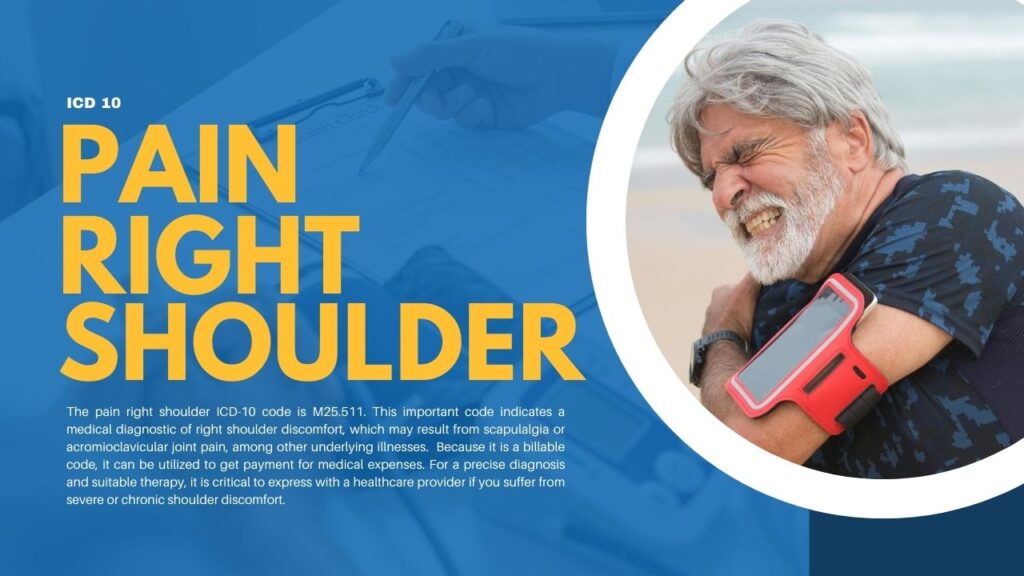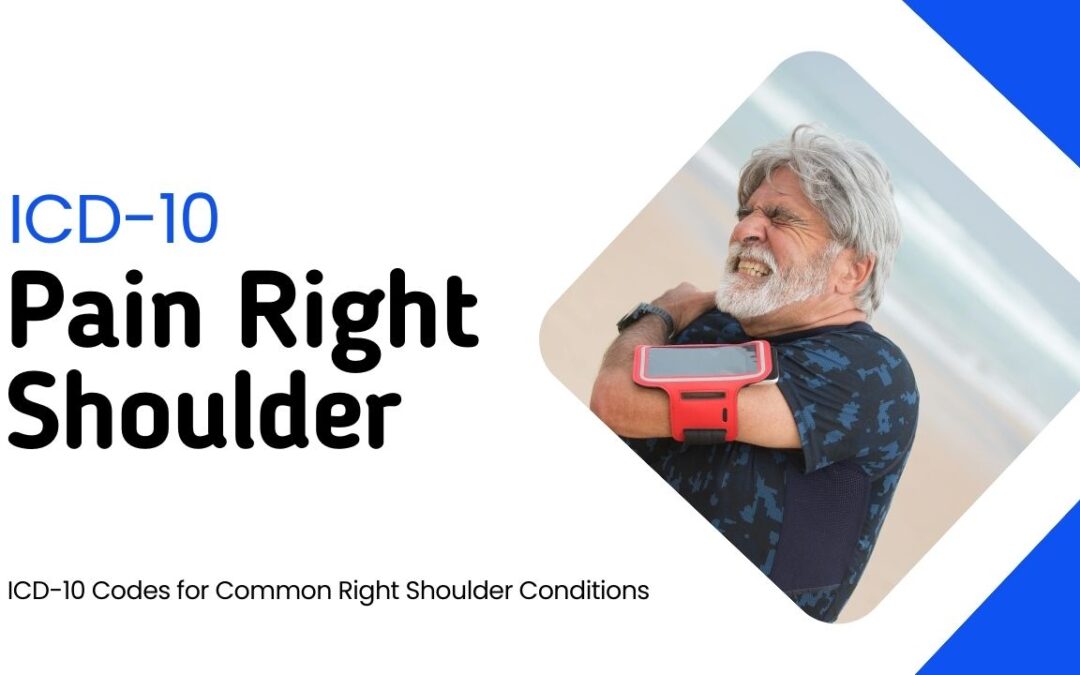The pain right shoulder ICD 10 code is M25.511. This important code indicates a medical diagnostic of right shoulder discomfort, which may result from scapulalgia or acromioclavicular joint pain, among other underlying illnesses.
Because it is a billable code, it can be utilized to get payment for medical expenses. For a precise diagnosis and suitable therapy, it is critical to express with a healthcare provider if you suffer from severe or chronic shoulder discomfort. To ensure that patients receive perfect care, the ICD-10 coding system is essential for the diagnosis and treatment of right shoulder pain in the healthcare system.
This code is frequently utilized in internal medicine and family practice, and it is good for the current fiscal year. The cause of the discomfort can be overuse, bad posture, or underlying medical issues. It can also vary in intensity and length. The World Health Organization (WHO) created a medical codes list, which healthcare professionals use to recognize and categorize medical diseases.
There are several reasons why one may experience right shoulder pain, from recent accidents to long-term degenerative diseases. Musculoskeletal injuries, degenerative diseases, infections, and inflammation are among the common causes. Several factors, including age, work, and lifestyle, contribute to right shoulder pain. Right shoulder pain is frequently caused by overuse, especially in people who perform repetitive activities that strain the shoulder joint.
This may result in bursitis or tendinitis in the rotator cuff. Early detection and treatment of overuse injuries can help avoid chronic pain and other consequences. Ergonomics and bad posture especially at work can play a big factor in right shoulder pain. For example, sitting incorrectly for long periods might cause strain to the tendons and muscles surrounding the shoulder. Shoulder pain can be lessened and prevented with the use of ergonomic changes, such as changing the height of a computer monitor or selecting the right chair.
Understanding ICD-10 Codes
The ICD-10 coding system is a worldwide recognized standard for documenting and categorizing diseases and medical conditions. It offers methodical way to code different medical diseases, making it possible for medical professionals to correctly identify, treat, and bill for services rendered. To determine the underlying cause of right shoulder discomfort, such as a musculoskeletal injury, degenerative illness, or other medical disorders, precise ICD-10 codes are utilized. For efficient treatment planning and insurance reimbursement, accurate coding is essential. Under the Health Insurance Portability & Accountability Act (HIPAA), physicians and healthcare professionals must utilize ICD-10, which will replace all ICD-9 code sets.
Classification of Right Shoulder Pain
Various categories can be used to classify right shoulder discomfort according to its duration and underlying cause. While chronic pain lasts for extended periods and is sometimes caused by degenerative illnesses like arthritis, acute pain usually appears unexpectedly and is frequently the result of an injury or misuse. Hence, this is critical to determine the best course of treatment requires an understanding of how shoulder pain is classified.
ICD-10 Codes for Common Right Shoulder Conditions
Several ICD-10 codes (International Classification of Diseases, Tenth Revision) are used to classify and diagnose common right shoulder conditions:
M25.51: This code is used for non-specific shoulder pain without a more specific diagnosis.
S43.4: This code is used for injuries involving the ligaments or tendons around the shoulder joint.
M75.1: This code is associated with injuries or degeneration of the rotator cuff tendons.
Healthcare professionals can more precisely identify and address the underlying cause of shoulder discomfort with each of these codes. Given that the underlying reasons for shoulder pain can vary greatly, it is critical to distinguish between discomfort in the right and left shoulder. For instance, pain in the left shoulder may be linked to cardiac disorders, but discomfort in the right shoulder is more likely to be related to problems with the liver or gallbladder. Correct diagnosis and coding are indispensable to successful therapy.
Common Symptoms:
The common symptoms are frequently felt when reaching up, lifting an arm, or engaging in other shoulder-intensive activities. A common complaint among individuals with shoulder pain is stiffness, which makes it challenging to move the arm freely. Moreover, pain in the shoulder can limit the range of motion, making it difficult to do daily chores like dressing or carrying goods.
Red Flag Symptoms:
Extreme, sudden pain, particularly if it does not have a known cause. Pain shooting down the arm may be referred to as pain from the chest or neck, it may be a sign of a nerve problem. A potential fracture or dislocation may be indicated by swelling or deformities. Emergency medical attention is necessary if you have symptoms of a heart attack, such as difficulty breathing or chest pain.
Why pain in the right shoulder code M25.511 is important?
Accurate Diagnosis: It enables healthcare providers to correctly diagnose and document the exact area of the pain, which is critical for optimal treatment planning.
Billing and Reimbursement: The M25.11 code is billable, which means it is used in medical billing to ensure that healthcare providers are reimbursed for their services. Accurate coding is essential for the financial health of medical practices.
Data Collection and Analysis: Using standardized codes such as M25.511 allows for the collection of information about the occurrence and causes of right shoulder pain. This data can be used to enhance patient care and discover patterns in musculoskeletal diseases.
Communication: It establishes a standard language among healthcare practitioners, insurance organizations, and researchers, allowing for clear and consistent communication about the patient’s condition.
Treatment and Management: By specifying the exact location of the pain, healthcare providers can tailor their treatment approaches more effectively, whether it involves physical therapy, medication, or other interventions.
Henceforth, understanding the correct use of ICD-10 codes ensures that patients receive proper care and that healthcare systems operate efficiently. Read More: Complete Guide to HIPAA Compliance Requirements


